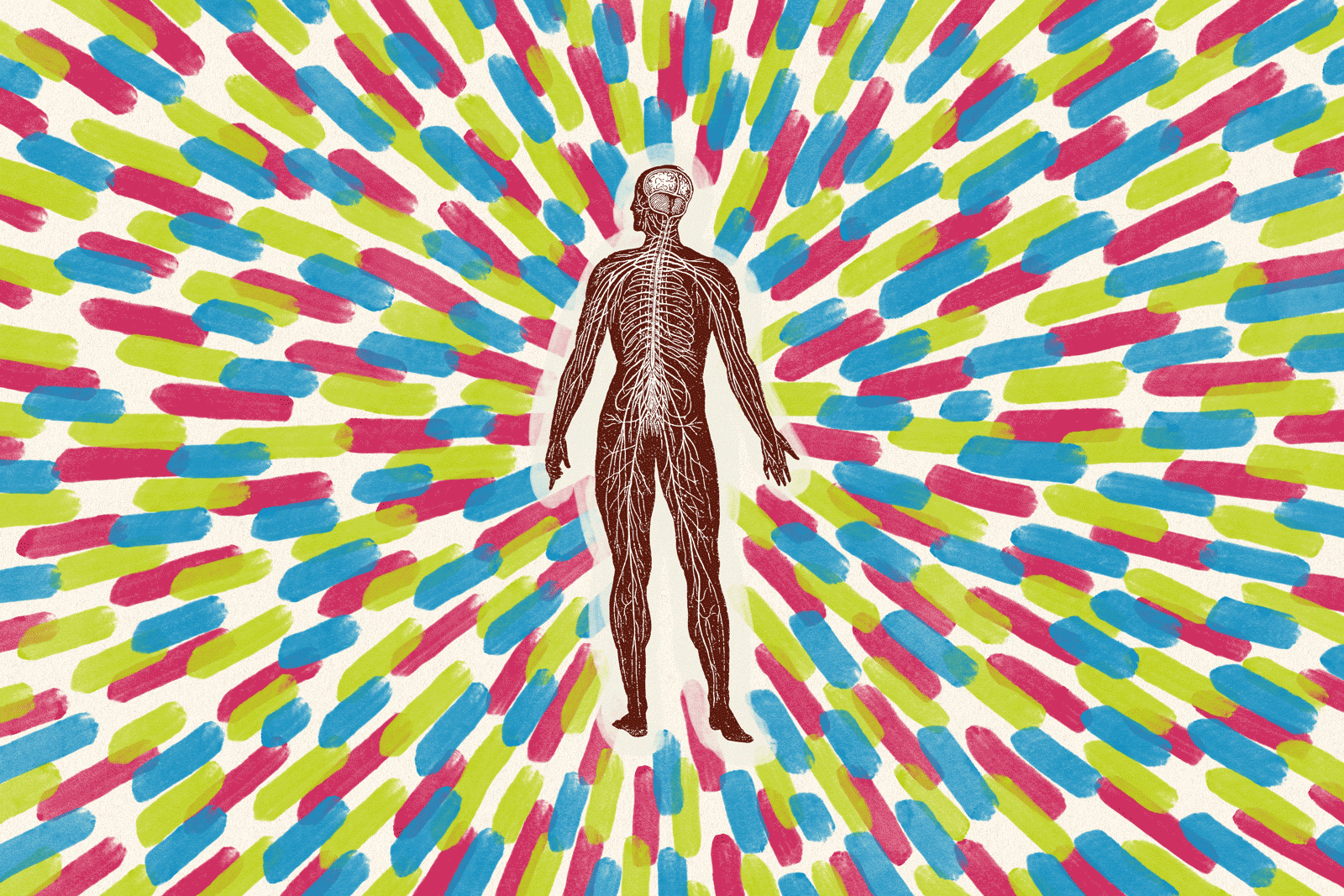Two extraordinary memoirs chronicle the ways mental illness carves chasms in a life
Book Review
No One Gets to Fall Apart: A Memoir
By Sarah LaBrie
Harper: 224 pages, $27.99
If you buy books linked on our site, The Times may earn a commission from Bookshop.org, whose fees support independent bookstores.
Book Review
My Good Bright Wolf: A Memoir
By Sarah Moss
Farrar, Straus and Giroux: 320 pages, $28
If you buy books linked on our site, The Times may earn a commission from Bookshop.org, whose fees support independent bookstores.
In two extraordinary memoirs, Sarah LaBrie and Sarah Moss chronicle the ways in which mental illness carves canyons and chasms in a life. For both women, the gift of writing came with strings attached: the strands of DNA they carry from parents who were mentally unstable. For LaBrie, the fears of an inherited mental illness restricted her soaring creativeness. For Moss, a difficult childhood manifested in life-threatening anorexia. For both, the life of the mind offered an escape.
LaBrieâs âNo One Gets to Fall Apartâ opens with a harrowing scene. âMy grandmother in Houston calls me in Los Angeles to tell me my mother was recently found on the side of the freeway, parked, honking her horn, her car filled with notes in which she outlined federal agentsâ plan to kill her.â It is, the author finds out, the last in a recent series of events in which her motherâs untreated schizophrenia has hit yet another apogee.

For LaBrie, it is a frightening reminder of her childhood. Raised by her single mother, LaBrie received financial support and stability from her grandmother, an accomplished attorney who was featured in a 1978 edition of Ebony magazine as an exemplar of how, as one Houston official said, âFor young Blacks with skills, this is the city of the 21st Century.â At midlife, her grandmother gave up practicing law to open a combination naturopathic medicine and book store. Her resilience in response to the historical legacy of racism and her sense that success is the result of focus and drive did not equip her to understand her own daughterâs mental illness.
LaBrieâs childhood is a mixture of the benefits bestowed by her grandmotherâs money â which includes a beautiful house and a first-class education at an elite private school â and living with a mother whose schizophrenia has been labeled by family as a violent temper. In her family, she writes, âWe loved and wanted the best for each other,â even if âit was policy to let fate take each person where it would, even if doing so meant failing to avert disaster.â LaBrie becomes the doubled self who presents a shiny façade to the world to hide family chaos and denial.
Shame and apathy led to deinstitutionalization, homelessness and full-on criminalization of the mentally ill in America.
A stellar student, LaBrie goes away to Rhode Island to attend Brown University. She is beset with depression and an eating disorder, responses to the toxic levels of competition among wealthy white children who benefit from the affirmative action of legacy admissions and family entitlement. The racism of her Ivy League peers, couched in genteel politeness, corrodes the shiny self that she presents. LaBrie becomes friends with another Black student, Sadie, and the two of them provide each other with support and companionship.
In her 20s, LaBrieâs life is structured by her pursuit of an MFA and her work on a novel that explores how the ideas of the vaunted philosopher Walter Benjamin affect the lives of her characters. She also enters a loving relationship with a young filmmaker. Novel writing serves as a refuge from her motherâs deteriorating mental state. Outside of the manuscript, unresolved feelings about her family cause friction in her romantic and platonic relationships and burden her with the fear that she has inherited her motherâs illness.
Mental health conversations are stuck on flawed notions of âawareness.â
LaBrie brings a piercing astuteness and sensitive voice to the dilemma raised by the writerâs desire to tell a story. Trying to separate a familyâs fictions from its realities is to enter locked closets full of redacted memories and erased stories that have been overwritten to hide the truth. Mental illness, despite our increased understanding of its causes and etiology, still causes shame. It can make a person doubt herself, make her question whether her perceptions are evidence of her own diseased mind. For a writer, the related ability to imaginatively interpret reality is turned inward.
In âMy Bright Good Wolf,â Sarah Mossâ family is deeply affected by growing up in Britain during a period of social and political turbulence. Even more so, they are affected by Britishness: In the United Kingdom, mental illness has been stigmatized by imperialist pretensions that a âstiff upper lipâ distinguishes British character above other nations.

In some ways sidestepping this stigma, Moss refuses the jargon of psychology, eschewing terms familiar to Americans such as depression, anxiety and trauma to focus instead on the cultural and intellectual forces that define who is seen as normal and abnormal within society.
When she teases apart the structural underpinnings that prescribe gender, her analytical skills are breathtaking. When she lets those structures tumble and gives voice to the child raised in a spartan emotional wasteland, she broke my heart.
Mossâ mother, whom she calls âJumbly Girl,â and her father, âthe Owl,â were rigid in their worldviews, and those ideas were used to govern their children. They smash their intelligent, sensitive daughter into fragments.
Ernesto LondoĂąoâs memoir âTrippyâ explores psychiatryâs renewed flirtation with drugs such as LSD. Heâs a believer but not a zealot.
Moss looks back on that childhood and extends a deep empathy to her mother. She sees her as part of âa generation generously educated right to the doctorate by the welfare state and then walled up in marriage, baited and switched after all.â Her mother, like other second-wave feminists, raged against a system in which professional aspirations and passions were to be sacrificed in order to fulfill roles as parents and wives. Moss grew up knowing that she was âthe trapâ that kept Jumbly Girl at home.
Mossâ mother used her intellect to become fanatical about domestic matters. She baked her own bread, grew a garden, rejected convenient processed foods and made clothes. Anger against her own domesticity pushed Jumbly Girl to practice a wellness doctrine that made her feel superior to the system she scorned. Family hiking and climbing trips nearly every weekend fed into her ethos of a prime healthiness.
The Owl fit the all-too-familiar model of men who showed progressive views at work but were misogynistic tyrants at home. He was obsessed with his wifeâs and daughterâs weights and would not allow sugar or butter in the house.
When Moss loses weight during an extended bout of illness, instead of noticing the fluâs ravaging effects and expressing concern, her father praises her new slimness and uses it as a cudgel against his âfatâ wife. And heâs physically violent.
Moss escaped into novels. She read constantly, beginning with Laura Ingalls Wilder and the British childrenâs adventure novels in which groups of kids explore the countryside with little parental supervision â tales to inculcate values of self-reliance â and proceeded into the 19th century canon of writers that includes Austen, the BrontŃs and Tolstoy. Living in an anxiety-producing home, where her parents fought constantly about food, she provides deep insight into the literary formation of an ideal heroine â slim, self-controlled and white, one who rejects the corruptions of luxury that bring dissolution and debauchery.
From the confluences of culture and family, Moss develops severe anorexia. For her, refusing her nutritional needs gives her control over her emerging adult body. Womenâs bodies are to be disciplined if they want to be taken seriously in a male world. The eating disorder followed her into adulthood and has had disastrous results.
Like LaBrie, Moss goes back into a dark past to bring forth childhood memories. Setting that childhood voice free comes at a cost. A second voice, rendered in italics, constantly challenges her memories, berating her for making up stories. She alternates that vulnerability with her mature intellect, which sees that the literature she read to escape actually enforced British imperialismâs moral values of racial superiority, robust physical health and modest womanhood.
Both LaBrie and Moss wrestle with the limits that rationalism imposes on emotional health. LaBrie understands her motherâs diagnosis, but that understanding does not lessen the pain of such knowledge. Writing fiction requires an author to harness voices in oneâs head that inspire characters and plots. How is that different from the free-rein voices that often accompany schizophrenia?
For Moss, creativity and intellect prove to be inadequate tools for controlling anorexia. âUnderstanding a problem is not the same as solving it,â she writes. âThe human capacity for getting used to things can be a terrible strength.â
From those terrible strengths possessed by both LaBrie and Moss, terrible beauty is born.
Lorraine Berry is a writer and critic living in Oregon.
More to Read
A cure for the common opinion
Get thought-provoking perspectives with our weekly newsletter.
You may occasionally receive promotional content from the Los Angeles Times.













